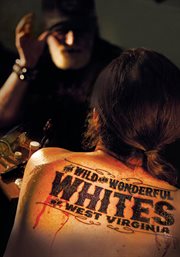Review by New York Times Review
Julian fellowes may be adapting the "Downton Abbey" formula to a stateside setting, but why wait for his late-19thcentury period piece, "The Gilded Age," when you can escape right now into the well-apportioned drawing rooms of the past? Just crack open one of the glossy new books devoted to American "country house" living and concoct your own melodrama about the privileged few. The impulse behind their lavish retreats was to "get away from it all" - but, of course, the "all" often came right along with them. Consider, for example, the Dows clan of OUR TIME AT FOXHOLLOW FARM: A Hudson Valley Family Remembered (Excelsior/State University of New York, $50) and the 800acre Rhinebeck estate they intended to be "a sort of Mount Vernon on the Hudson." The patriarch, Tracy Dows, was an avid amateur photographer, and David Byars's book is based on the 26 private albums, dating from 1903 to the 1930s, that Dows's daughter donated to Hudson River Heritage. There are plenty of views of the pillared mansion and its outbuildings (including the guesthouse where Thomas Wolfe wrote "Look Homeward, Angel") as well as the elaborate spreads of pals like the Astors, who had a vaulted, Corinthian-columned indoor swimming pool, and the Dinsmores, whose guests could play golf on their nine-hole course. The text is filled with the era's boldface names - Edith Wharton, Charles Dana Gibson, the Olmsted brothers, Alice Roosevelt Longworth - and the family's travels took them to the era's favorite high-end locales: the "cottages" of Newport; the exclusive resorts of Hot Springs, Va., and Jekyll Island, Ga.; the Beatrix-Farranddesigned gardens of Seal Harbor, Me. But in between the lines of the captions are stories waiting to be told. Why did Mrs. Dows choose to live apart from her husband in Washington, where she became known for her "impromptu parties"? What led one of her daughters to stumble into two bad marriages, each one ending, after a few years, in divorce? Was there tension with the son who decided to become an artist? Don't you want to know more about the daughter who married a globe-trotting Swedish diplomat and wound up in Cairo in the mid-1930s? Even the walk-on parts have possibilities, like the family friend who disappeared mysteriously in northern India and the farm manager who had the distinction of striking out Babe Ruth three times in one amateur game. And then there's the story of Foxhollow Farm itself. In 1929, after the stock market crashed, the main house was turned into a girls' school and Tracy Dows went to live in Europe, first at the Connaught Hotel in London and later in Copenhagen. Over the years, Foxhollow passed through various hands and had various incarnations. Today it's occupied by the drug-rehab organization Samaritan Daytop Village. One can only imagine what Tracy Dows's "irascible" tyrant of a mother (who was said to bear a striking resemblance to Queen Victoria) would have said about that. Laurie Ossman and Debra A. McClane's THE GENTLEMAN'S FARM: Elegant Country House Living (Rizzoli, $55) certainly lives up to its billing. But Walter Smalling Jr.'s photographs do more than illuminate the results of several centuries of the 1 percent's attempts to retreat from "worldly cares." Since it begins with some of colonial Virginia's surviving plantations, including Stratford Hall, Monticello and Oak Hill (where James Monroe "largely disregarded" Jefferson's architectural advice), it also bears witness to the labor ("tragically, often enslaved," as the authors delicately put it) that cast a shadow over the bucolic peace sought by the rural gentleman scholar. So as the book moves through the 19 th and 20 th centuries and into the present, it's gratifying to note that its final entry, Salamander Farm, has been turned into a resort by Sheila Johnson, the philanthropist movie producer who was a founder of the Black Entertainment Television network. Other estates now house commercial vineyards, museums and refuges for abused animals. And they all have their stories. North Wales, which boasts two ballrooms (one handily connecting to the master suite via a private staircase), was briefly owned by the originator of the two-pants suit and was almost snagged as an American bolt-hole by the Duchess of Windsor. Prince Troubetzkoy, the half-Russian aristocrat who married Amélie Rives of Castle Hill, was in the habit of foraging on the lawn for edible greens, then turning up at dinner in white tie and tails for his personally harvested salad. Two spinster sisters lived at Edgemont: when one of them died, the survivor painted the entire house black, inside and out. No such drabness can be found in A HOUSE IN THE COUNTRY (Vendome, $55), in which the architect Peter Pennoyer and his interior-designer wife, Katie Ridder, take us through the process of planning, building and decorating a mansion on their six-and-a-half-acre property in Dutchess County, N.Y. (with an editorial assist from Anne Walker). Eric Piasecki's photographs of the brand-new-but-oldlook Greek Revival structure and its lush gardens (organized around the notion that "bigger would be better" and "less is a bore") are nothing if not envy-inducing. But first dibs on playing lord of the manor clearly belong to the couple's elderly dachshund, Teddy, posing inside in what is clearly his personal armchair and immortalized outside in the bas-reliefs above a bay window, furiously chasing - but never quite catching - a rabbit.?
Copyright (c) The New York Times Company [December 11, 2016]

